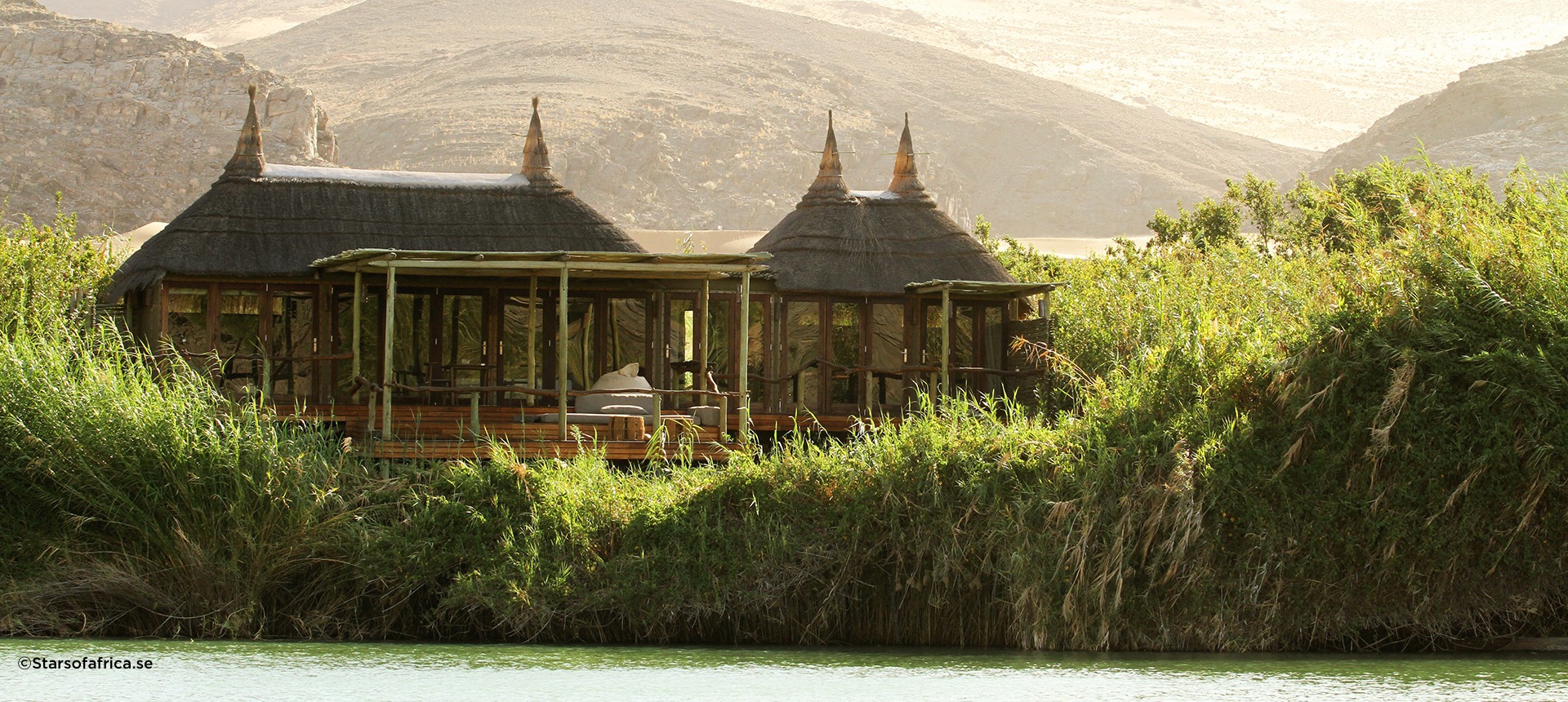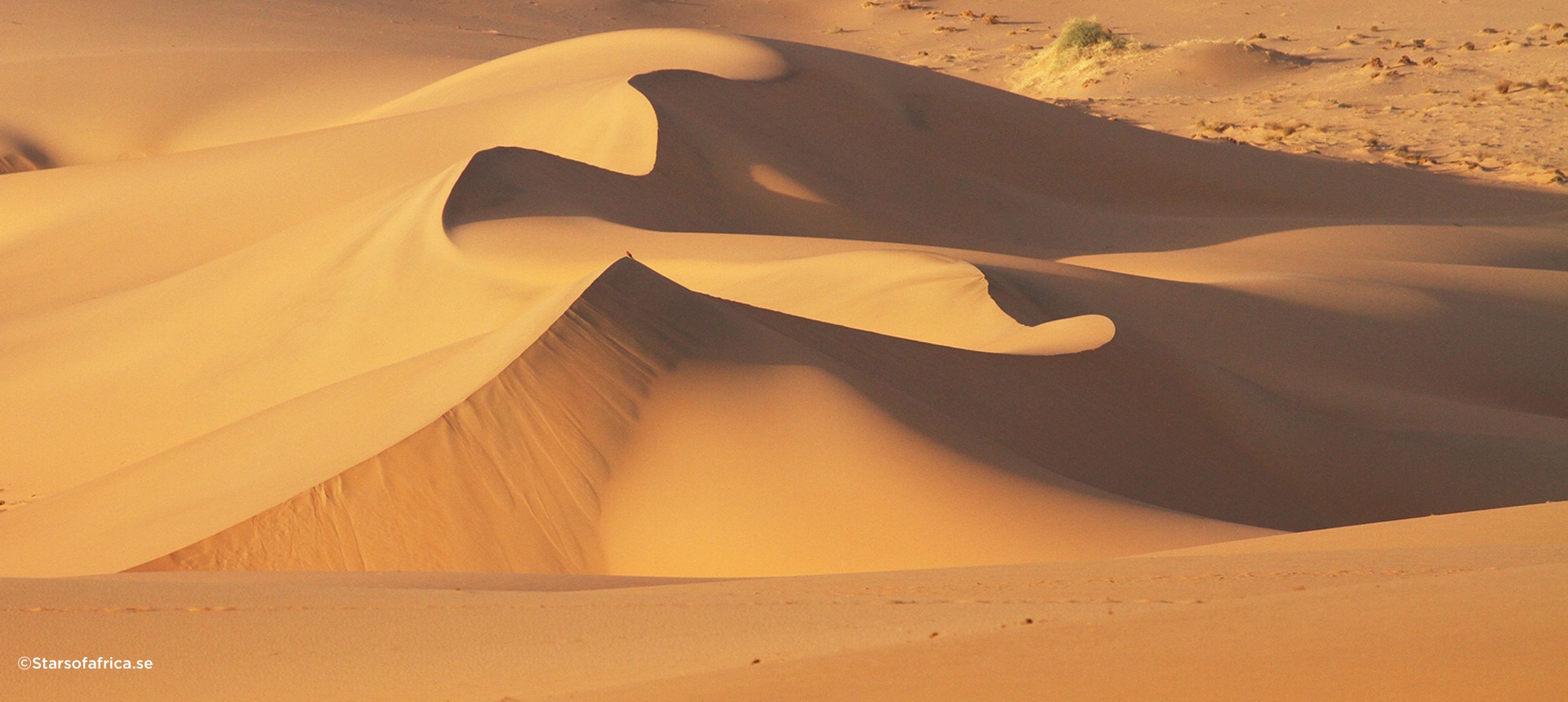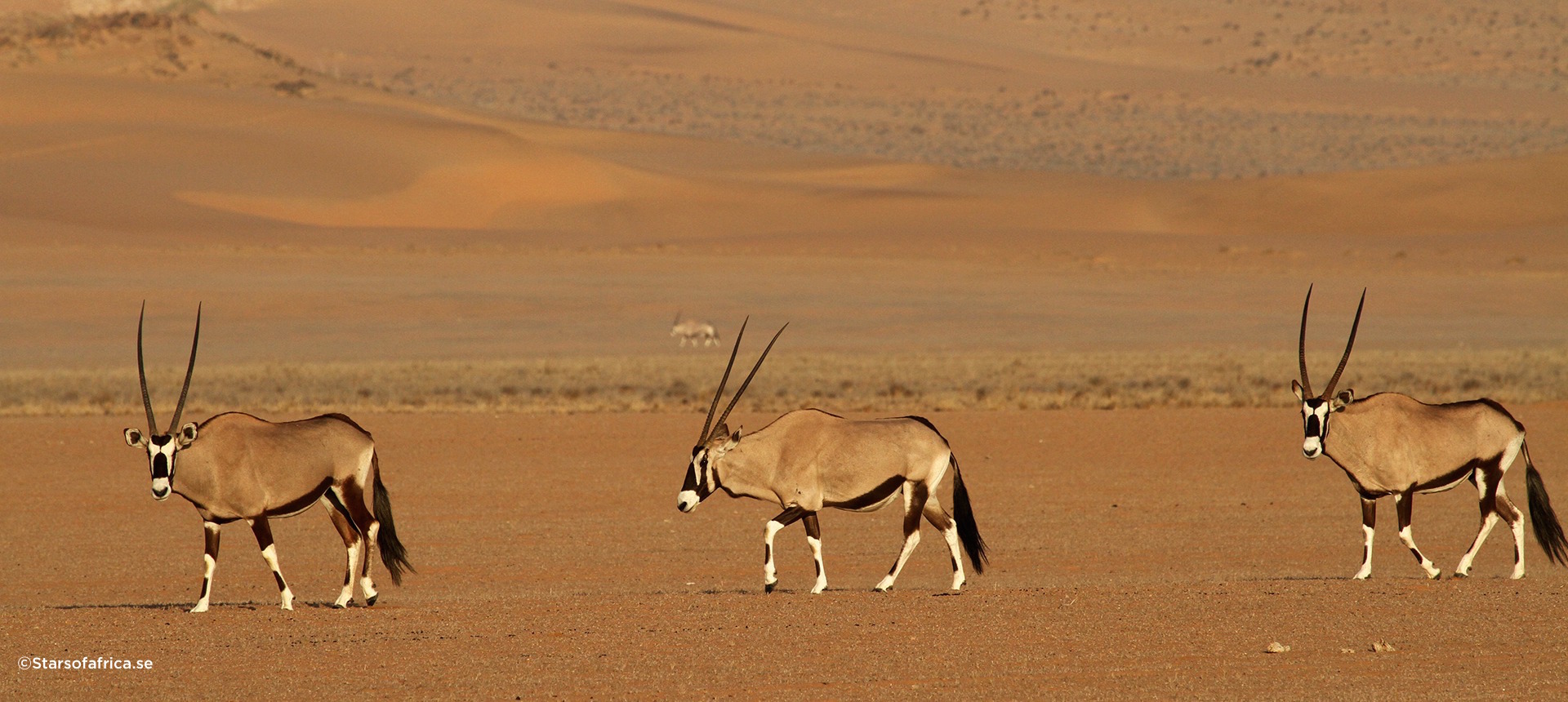SERRA CAFEMA CAMP
OVERLOOKING THE KUNENE RIVER, SURROUNDED BY THE INFINITE LUNAR-LIKE LANDSCAPE OF THE NAMIB DESERT
Explore one of Africa’s most delicate ecosystems at the beautiful Serra Cafema Camp, hidden within the vast Hartmann Valley, located in the extreme northwest of Namibia. This is one of the most remote and surreal destinations in all Africa.
The contrast between the desert and the river habitat could hardly be more dramatic. Behind the Camp, which is set amongst ancient Albida trees, are mountains and dunes. In front of Serra Cafema Camp are oases of green along the banks of the Kunene River, the only permanent source of water in the region.
Serra Cafema gets its Portuguese name from the mountains that dominate the northern skyline, and shares the area with the Himba people. For this endless wilderness, the only reliable, yet minimal source of water is the famous Namibian fog created when the icy Atlantic waters meet the warm air of the Skeleton Coast. The moisture drifts far inland along the river valleys and is eagerly absorbed by plants and animals before the sun can evaporate the residue.
Serra Cafema Camp is open all year round
ACCOMMODATION
Serra Cafema Camp is comprised of just eight spacious canvas and thatched chalets nestled amongst the shady Albida trees along the bank of the Kunene River. Each chalet affords spectacular views and comes equipped with its own en-suite bathroom, indoor and outdoor showers and private deck. Dramatic and remote, timeless yet ever changing, Serra Cafema is a celebration of untainted nature and serious luxury. Rapids in the river just below camp provide a tranquil ambience, a unique experience of falling asleep to the sounds of rushing water, after a perfect day dedicated to exploring one of the driest deserts in the world.
Dining
Serra Cafema Camp’s magical outdoor dining areas overlook the Kunene River under the bright stars of Namibia.
CONSERVATION
Just north of the Kunene River mouth, a host of sea turtles, including the green, loggerhead and leatherbacks, converge annually to nest on Angolan beaches. They are particularly vulnerable on the nesting beaches, with their nests being frequently plundered by humans. To this end, Wilderness Safaris has begun a conservation initiative involving both Namibia and Angola, with the aim of securing nesting beaches in southern Angola. This initiative involves monitoring, feeding and development in Namibian waters.
COMMUNITY INVOLVEMENT
The land, from which Serra Cafema is leased, belongs to the 300,000-hectare/740,000-acre Marienfluss Conservancy. It is home primarily to the Himba people who are among the last semi-nomadic peoples on the planet. Wilderness Safaris has provided the capital and expertise necessary for the construction and marketing of Serra Cafema. In addition Wilderness Safaris has undertaken to hire and train members of the local community in this ecotourism business. The ultimate vision is to transform Serra Cafema into a venture that is wholly staffed, run and owned by the Himba. With utmost respect for the Himba peoples and culture, Serra Cafema has been able to establish excellent relationships with the adjacent Himba villages. Guests are now able to visit and experience traditional Himba culture, to the benefit of all. The Himba’s lifestyle is different and fascinating to visitors. During guests visits, it is important to maintain the delicate balance necessary to be able to share insights without impacting negatively on the people and their customs. Serra Cafema Camp, situated within Himba territory, has approached the Himba people with deference, creating a positive relationship between the Camp and the community.
ACTIVITIES
Serra Cafema Camp offers an astonishing and intense desert adventure: the fascinating wildlife, specially adapted to desert conditions, the endless space, hauntingly beautiful landscapes, utter tranquility and extraordinary light combine to make this one of Africa’s most compelling wilderness regions. There are a number of ways to explore this breathtaking landscape, dotted with oryx, springbok and ostrich, crocodiles and aquatic birds, all seemingly out of place in this moonscape environment.
Nature drives
Nature drives or carefully guided quad bike excursions through the fragile dunes allow guests to experience the true Namib in its unbridled glory. The utmost care is taken to tread lightly on the dunes and preserve the delicate habitats of this landscape.
Boating
Boating on the Kunene River provides guests with the opportunity to venture through the lush riverside oases. Crocodiles and water birds seem out of place in this surreal, desert landscape.
Walking
Walking can be done in the remote mountains and along the river valley.
Cultural visit
A visit to a Himba settlement, should the nomadic people be in the area, is one of the highlights of Serra Cafema.
PHOTOGRAPHY
Serra Cafema Camp is one of the remotest camps in Africa. Apart from dramatic scenery, spectacular topography, fairy circles and the linear oasis of the Kunene River, Serra Cafema offers photographers the occasional opportunity to interact with the Himba, one of the last truly nomadic tribes in the world. The rugged scenery combined with the contrast of the greenery of the river provides amazing photographic opportunities with oryx and other desert-adapted wildlife in the epic sand dunes.







